Chef jacket colours—what to choose and why
Click a link below to jump to the relevant section:
- Are all chef’s jackets white or do they come in other colours?
- What do the different coloured chef jackets mean?
- How important are uniform colours?
- What is the significance of the coloured buttons on a chef’s uniform?
- What combinations or colour schemes work well for chef’s uniforms?
- Is it possible to buy chef’s clothing in sets?
- Chef’s clothing—FAQs
Are all chef’s jackets white or do they come in other colours?
Ask most people to envisage a chef, and the famous white jacket, trousers and hat (known as a toque) will likely spring to mind. White has been the traditional chef’s colour since the 19th century, when it was introduced to give the cooking profession a sense of importance and high regard.
White was chosen largely for hygiene reasons, as it enabled cooks and kitchen employees to more easily notice when their clothing was soiled. It also carried some prestige due to its association with respected professions such as science and medicine.
Want to find the ideal white chef's jacket for you? See our range here
Although many of today’s chefs honour tradition by wearing chef whites, black jackets and black-and-white chequered, patterned or houndstooth trousers have become increasingly popular in recent times, particularly in restaurants with open kitchens.
The black jacket’s stylish look and practicality in concealing food stains and spillages make it a standout choice for lots of chefs and restaurant workers.
View our range of black chef’s jackets here
But chef’s garments aren’t limited to black and white—indeed, you can find jackets and other garments in colours such as:
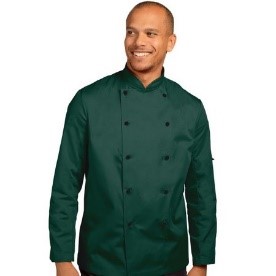
Green |
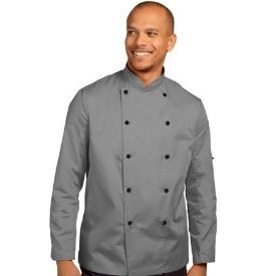
Grey |
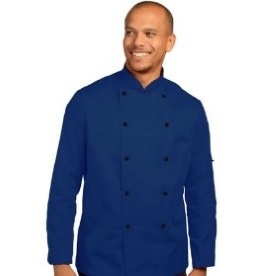
Blue |
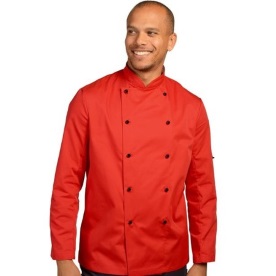
Red |
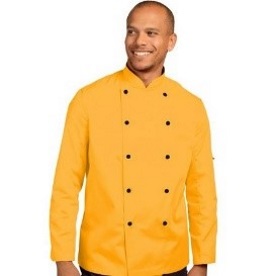
Yellow |
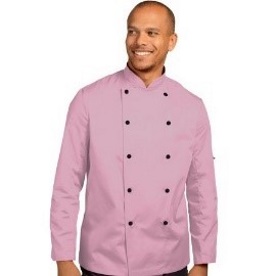
Pink |
Like the look of this jacket? View the Russums Technicolour Jacket here
What do the different coloured chef jackets mean?
There isn’t really a specific meaning behind the colour of a chef’s jacket. It most often comes down to the cook’s personal preference, or a need to match the aesthetic of the dining establishment.
Sometimes a restaurant owner might introduce a colour scheme to designate different groups of staff—for example:
- all main cooks—including the head chef—in white
- prep cooks in black
- other kitchen staff in blue
Often, lower-level and mid-level cooks will wear black and white chequered trousers, while upper-level chefs wear solid black.
Traditionally, white was employed to give the cooking profession a certain amount of prestige. Lots of today’s chefs wear a white coat to honour that tradition, but many opt for black or other colours instead.
Colours are generally regarded as more a fashion statement than anything else.
How important are uniform colours?
In most cases, the restaurant will choose the colour and style of uniform it wants its chefs and cooks to wear. This is generally an aesthetic decision, influenced by the design and branding of the establishment as a whole.
Certain colours do serve a practical purpose—for instance:
- white signifies hygiene and cleanliness, helps repel heat from the kitchen and is seen as classic or traditional
- black can hide stains and enables establishments to have their chefs working in open kitchens exposed to diners’ eyes
What is the significance of the coloured buttons on a chef’s uniform?
In past times, it was tradition for lower-level cooks and apprentices to wear white buttons, while qualified and upper-level chefs wore black. These days, however, most kitchens have a more relaxed policy on coloured buttons and make no demands on specific colours.
Read more about fastenings for chef’s jackets here
What combinations or colour schemes work well for chef’s uniforms?
A good approach to take is to make sure the colours of your chef’s uniforms match your brand identity and the aesthetics of your dining establishment.
Consider the theme of your restaurant—is it rustic and homely, more upmarket, or quite traditional?—and find colour schemes and combinations that reinforce it. A rustic theme, for instance, could take inspiration from the outdoors and use lots of greens, browns and neutral colours.
Make your chef’s uniforms just one part of your brand identity—you should aim for consistency between your interior décor, tableware, signage, menus and staff clothing.
You should also try to use your chef’s uniforms to create an atmosphere. Blues and purples work well in establishments with a calm, relaxed dining experience, while brighter, bolder colours suit a busier environment, like a fast-food restaurant.
View our full selection of chef’s clothing here
Is it possible to buy chef’s clothing in sets?
Yes. Most chef’s clothing suppliers sell full kits, which generally include:
- a chef’s jacket
- chef’s trousers
- a chef’s hat or skull cap
- an apron
These are often sold at discounted rates, making it more cost-effective for dining, catering and hospitality establishments to kit out their cooks and kitchen staff.
We showcase a variety of Russums’ best-selling chef’s uniform bundles below.
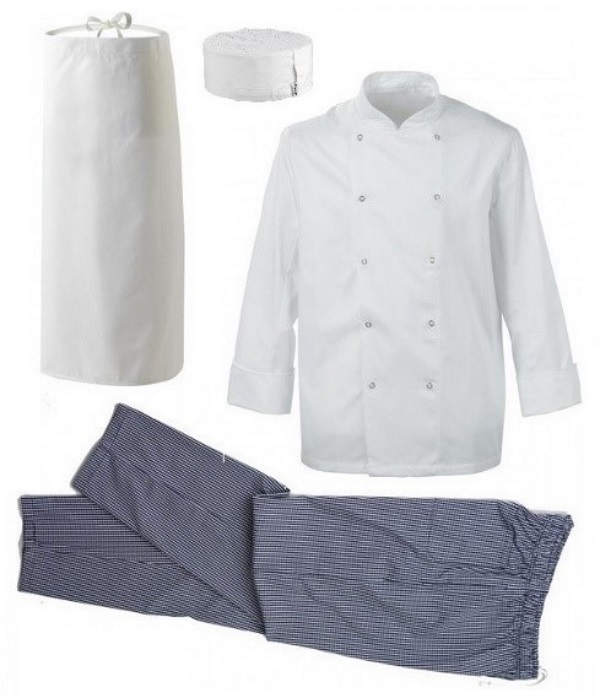
Russums Full Chef Kit (Deal A)
- Scholar chef’s jacket
- Scholar chef’s trousers
- Adjustable poly/cotton skull cap with Coolmax top
- White cotton waist apron 28" x 33"
Also available:
Price: £28.85 (+ VAT)

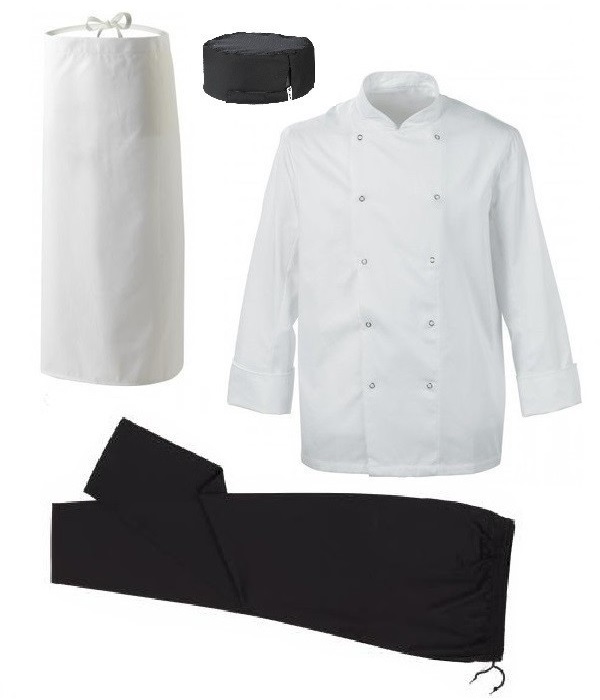
Russums Full Chef Kit (Deal B)
- Scholar chef’s jacket
- Black chef’s trousers
- Adjustable poly/cotton skull cap with Coolmax top
- White cotton waist apron 28" x 33"
Also available:
Price: £28.85 (+ VAT)
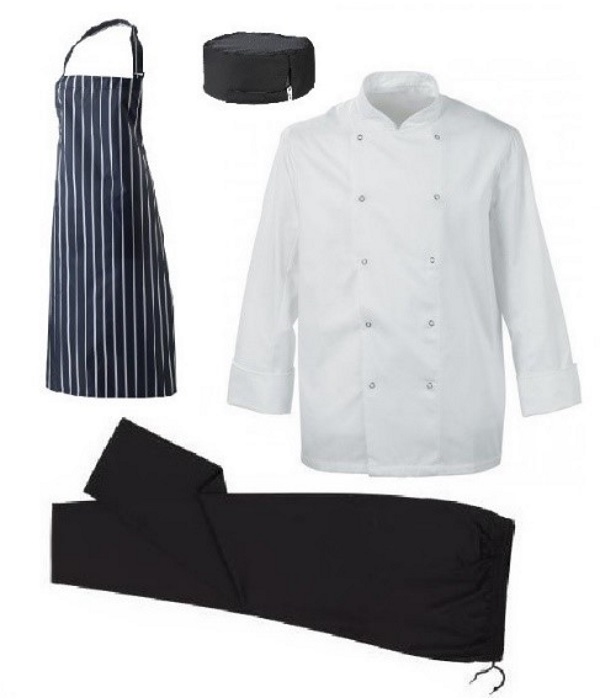
Russums Full Chef Kit (Deal C)
- Scholar chef’s jacket
- Black chef’s trousers
- Adjustable poly/cotton skull cap with Coolmax top
- Blue/white butcher's stripe bib apron 28" x 36"
Also available:
Price: £31.99 (+ VAT)
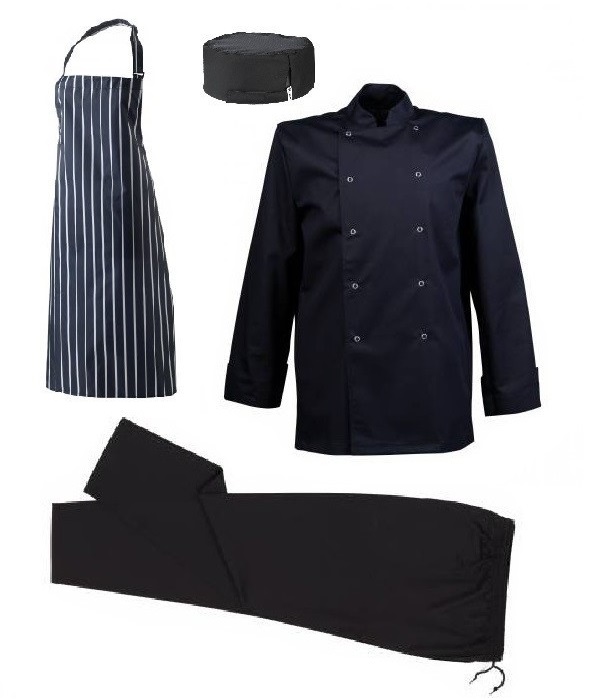
Russums Full Chef Kit (Deal D)
- Black Windsor chef’s jacket
- Black chef’s trousers
- Adjustable poly/cotton skull cap with Coolmax top
- Blue/white butcher's stripe bib apron 28" x 36"
Also available:
Price: £33.99 (+ VAT)
Chef’s clothing—FAQs
What materials are used to make chef’s uniforms?
Chef’s uniforms need to be lightweight but strong enough to protect the person wearing them from burns and splashes from hot liquids and oil. They must also be fire-retardant, stain-resistant and loose and flexible enough to allow the chef to move easily throughout the hot kitchen and stay cool.
For these reasons, cotton is a very popular material for chef’s clothing. It’s also comfortable to wear, breathable and the least likely material to irritate the wearer’s skin.
Polyester, or a blend of polyester and cotton fabric (called polycotton), are also commonly used.
Read more about materials for chef’s clothing here
Why do chefs wear long sleeves?
Most chef’s jackets are available in long sleeved or short sleeved options. Long sleeves are predominantly for protection, to shield the cook against splattering liquids or oil.
Why do chefs wear striped or chequered pants? Why are they baggy?
Any sort of pattern on chef’s clothing is intended for camouflage. Striped or chequered trousers make it harder for diners or guests to notice when a chef is covered in food stains and spillages!
Trousers are loose or baggy for comfort—cooks are constantly moving around the kitchen and any sort of restriction makes their work more difficult. Baggy trousers help keep them cool.
Do cooks have to wear a hat?
It’s considered proper hygiene for restaurants and other dining establishments to have their chefs and kitchen workers wearing some form of headwear. This reduces the risk of food being contaminated by hair.
Any food retailer must be aware of the laws, regulations and basic principles around food safety, and proper food handling—which includes the need to avoid any kind of contamination—is one particular standard.
Should chefs wear their uniforms outside the kitchen?
While there’s no rule to say they mustn’t, it’s considered good practice for any chef to avoid wearing their kitchen garments outside the kitchen. That way, there’s no risk of cross-contamination or issues with hygiene.
5 August 2019





